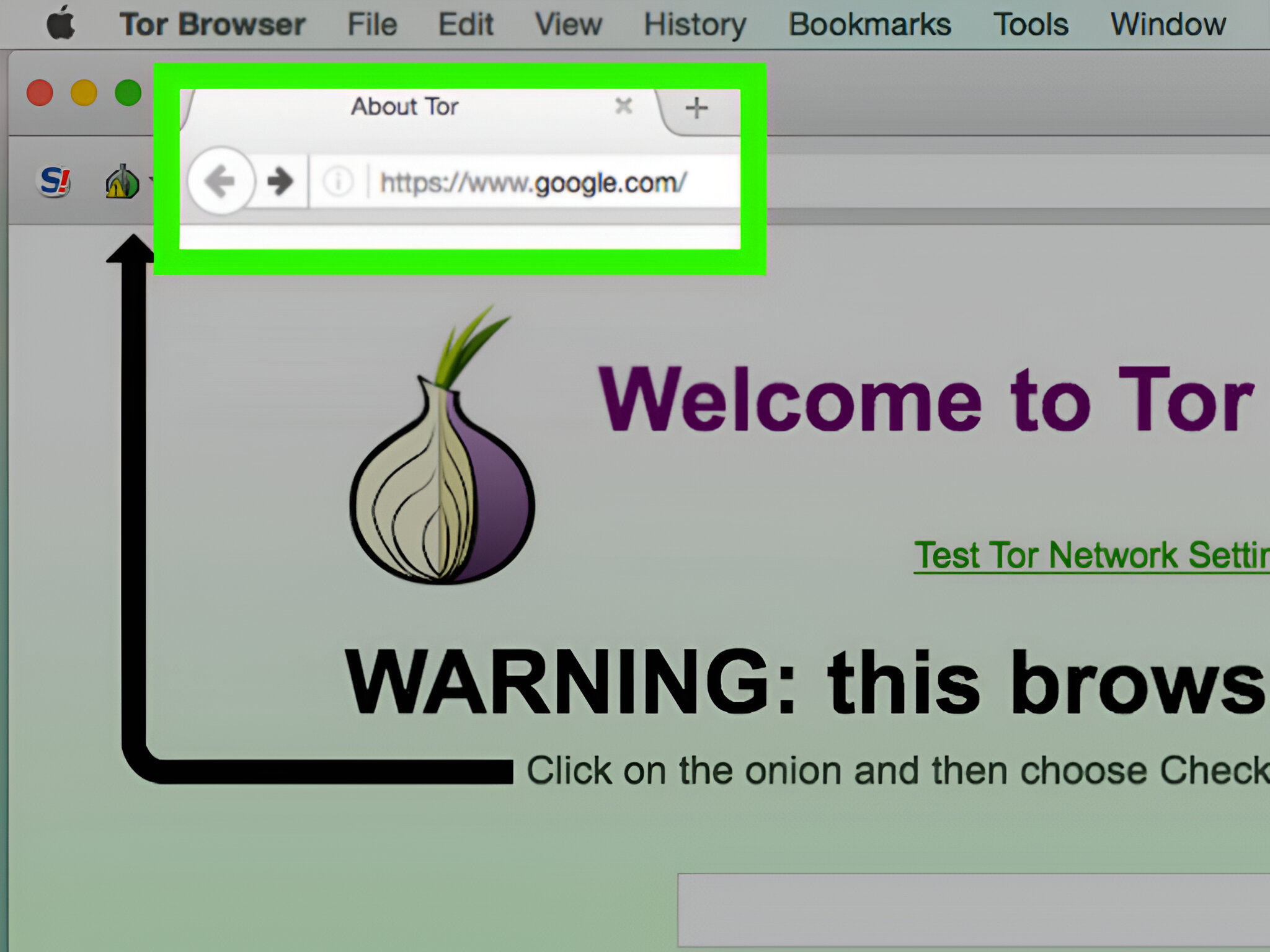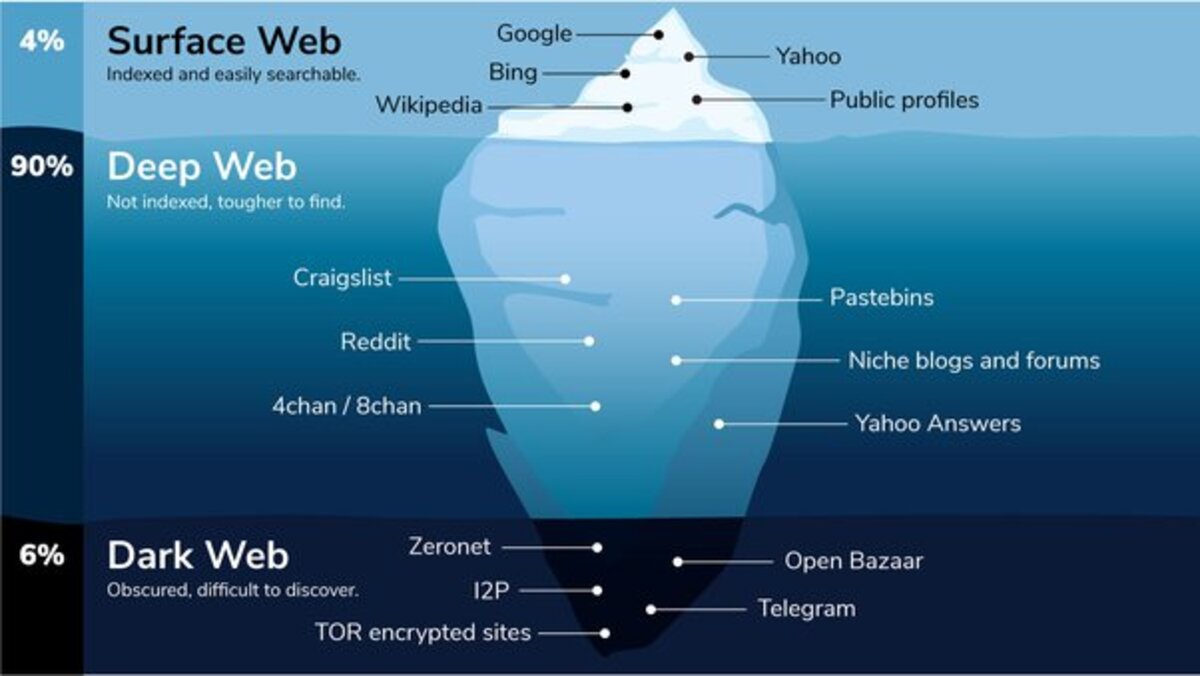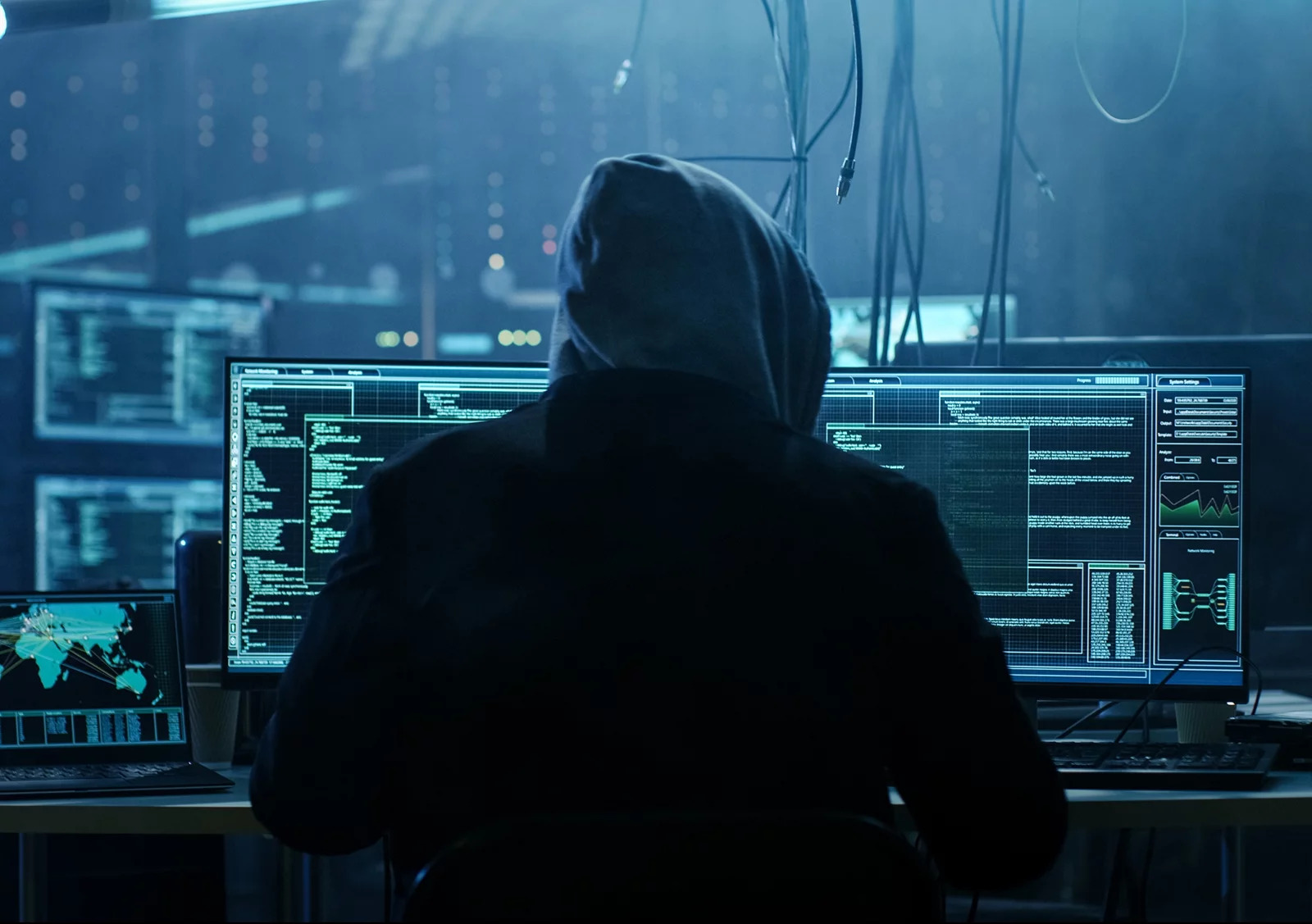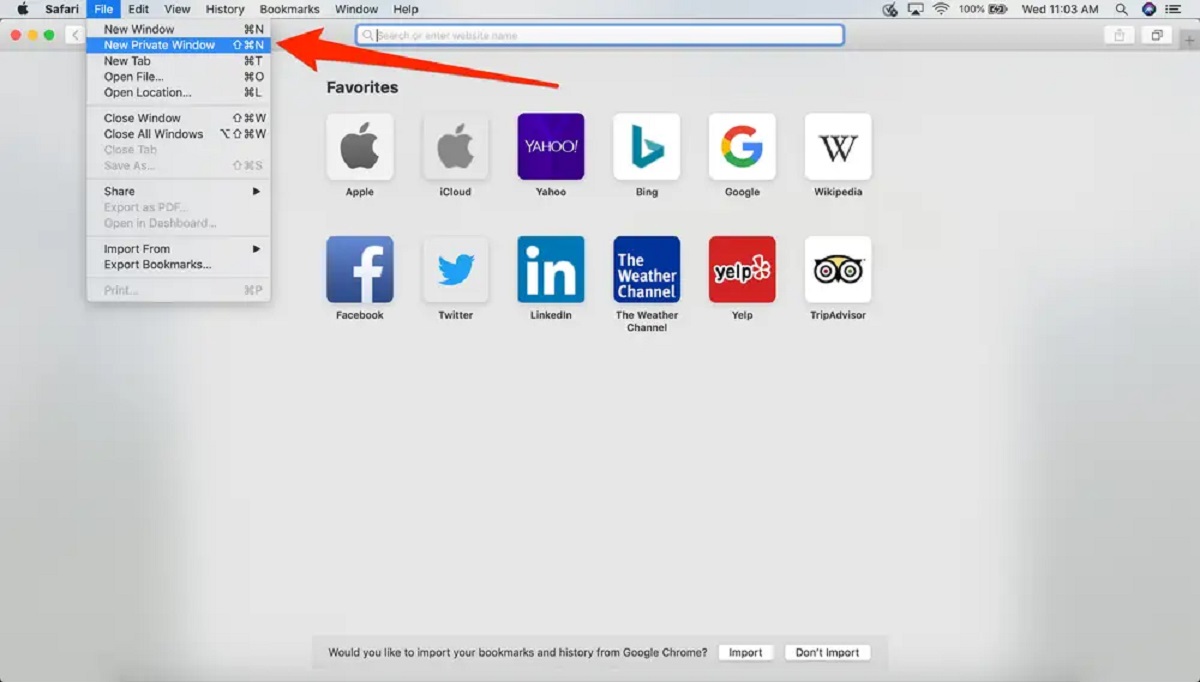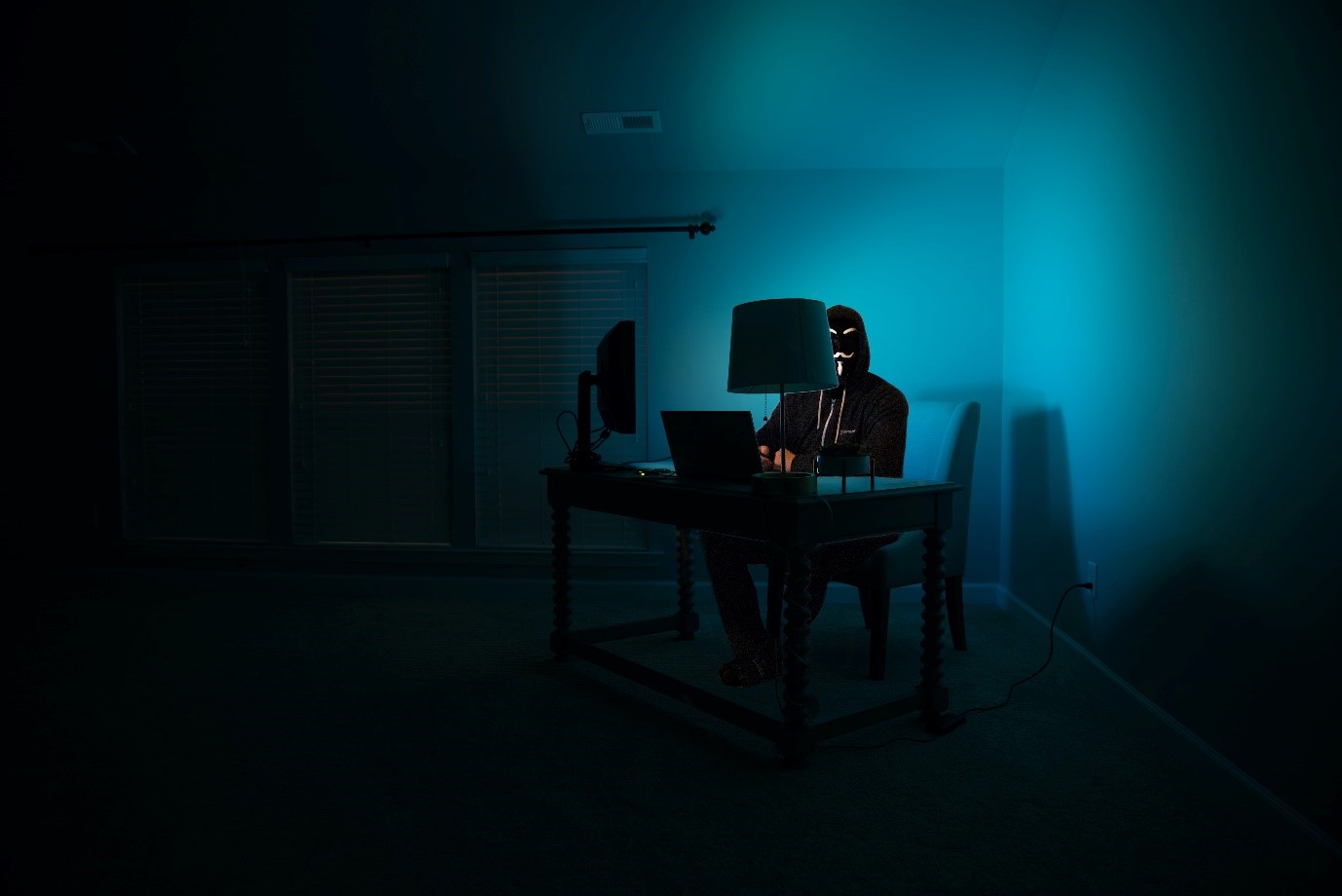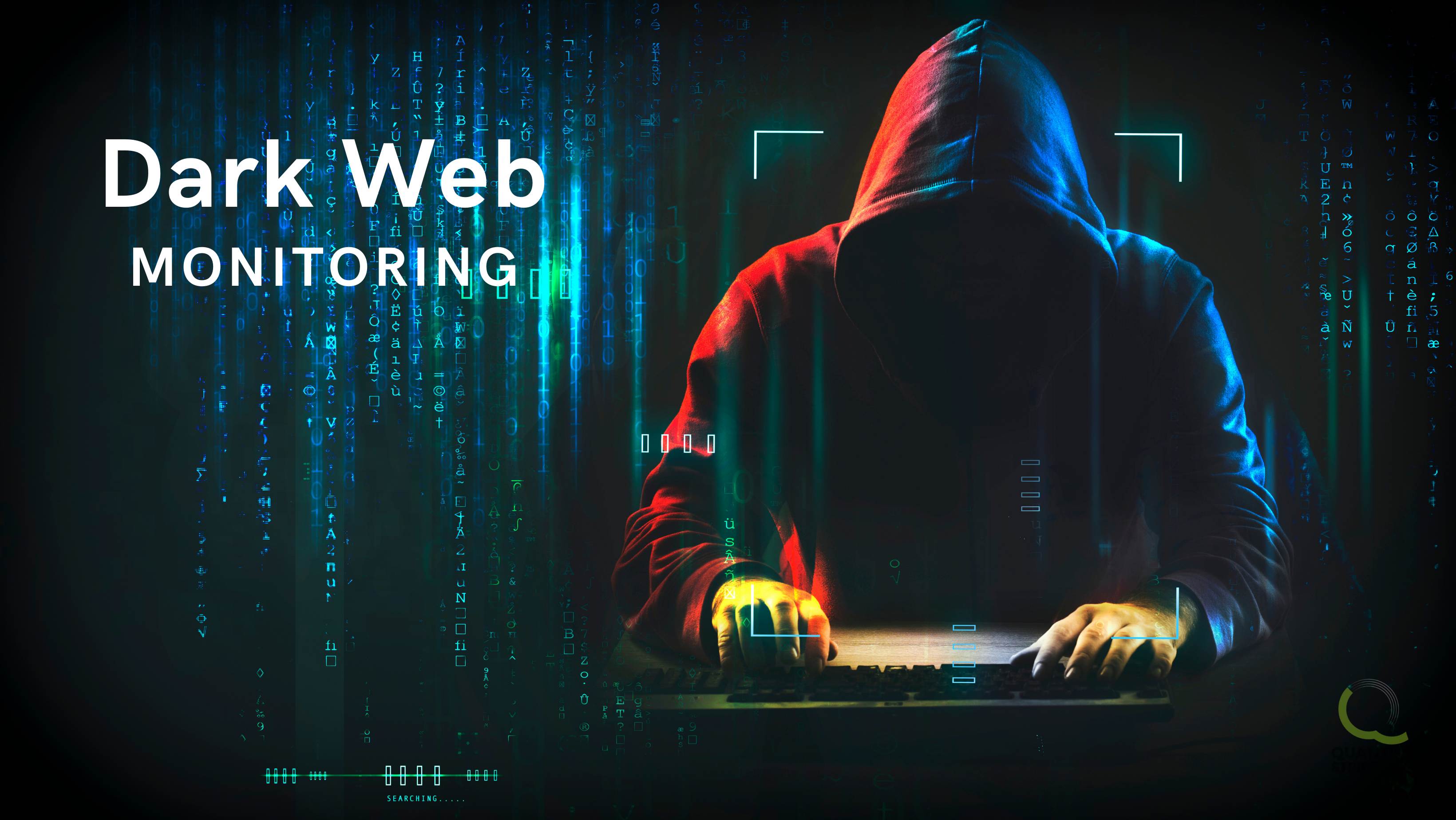Introduction
The Dark Web has become a buzzword in recent years, often associated with illegal activities and hidden online marketplaces. But what exactly is the Dark Web, and how can you know if you’re on it?
The Dark Web refers to a part of the internet that is not accessible through traditional search engines. It is a hidden network of websites and services that require specific software and configurations to access. While the Dark Web itself is not illegal, it has gained a notorious reputation due to its association with illicit activities.
In this article, we will explore some signs that may indicate you are on the Dark Web. By understanding these indicators, you can better protect yourself from potential dangers and ensure your online activities align with legal and ethical guidelines.
It’s important to note that the Dark Web is different from the surface web or the regular internet that most people are familiar with. The surface web consists of websites indexed by search engines, while the Dark Web requires special software like Tor or I2P to access.
So, how can you determine if you have stumbled upon the Dark Web? Let’s dive into the signs and characteristics that can help you identify if you’re on the Dark Web.
What is the Dark Web?
The Dark Web is a hidden part of the internet that is not indexed by search engines. It is a network of websites and services that are intentionally hidden from public view, making it difficult to trace the activities and identities of users. The Dark Web operates on encrypted networks and requires specific software, such as Tor (The Onion Router), to access it.
Unlike the surface web, which consists of websites that are easily accessible through search engines like Google or Bing, the Dark Web is specifically designed to prioritize anonymity and privacy. This anonymity is achieved by encrypting communication and bouncing it through several computers around the world, making it nearly impossible to trace back to the user.
One of the key features of the Dark Web is its use of .onion domains. These domains cannot be reached using regular browsers and require the Tor browser to access. The .onion domain is a pseudo-top-level domain that is only accessible through the Tor network.
The Dark Web is often associated with illegal activities. While not all activities on the Dark Web are illegal, it has undeniably become a hub for various illicit endeavors. These include the sale of illegal drugs, hacking tools, stolen data, counterfeit money, and even firearms. It is also a platform for cybercrime services, such as hacking-for-hire, DDoS attacks, and the sale of personal information.
However, it is important to note that the Dark Web is not solely dedicated to illegal activities. It also serves as a platform for whistleblowers, journalists, and activists who require a secure and anonymous way to communicate and share information. Additionally, there are websites and forums on the Dark Web that provide information on privacy, security, and other topics of interest to individuals seeking to protect their online activities.
Understanding what the Dark Web is and the activities that take place within it is crucial to ensure that you do not inadvertently stumble upon illegal content or become a victim of cybercrime. By staying informed and vigilant, you can navigate the internet safely and protect your digital footprint.
How is the Dark Web accessed?
Accessing the Dark Web is not as simple as launching a regular web browser and typing in a URL. It requires specific software and configurations to navigate its hidden networks. The most common way to access the Dark Web is through a browser called Tor (The Onion Router).
Tor is a free and open-source software that allows users to browse the internet anonymously. It achieves this by encrypting the user’s traffic and routing it through a network of volunteer-operated servers, known as nodes or relays, around the world. This process effectively hides the user’s identity and location.
To access the Dark Web using Tor, users need to download and install the Tor browser. This browser is designed to access websites with .onion domains, which are only reachable through the Tor network. It ensures that the user’s internet activity is routed through the Tor network, preserving anonymity.
Once the Tor browser is installed, users can enter .onion URLs or use directories, such as the Hidden Wiki, to find websites and services available on the Dark Web. It’s important to note that browsing the Dark Web comes with its own risks, including the potential exposure to illegal activities and malicious content.
Another method to access the Dark Web is through the I2P (Invisible Internet Project) network. Similar to Tor, I2P provides encrypted and anonymous access to websites. It uses a decentralized network of routers to protect the privacy and identity of its users. However, the Dark Web on I2P is smaller and less widely known compared to the Tor network.
It’s worth mentioning that while accessing the Dark Web is legal in most countries, engaging in illegal activities on these platforms is not. Engaging in any illicit activities, such as buying and selling illegal goods or services, can lead to severe legal consequences.
Understanding the methods of accessing the Dark Web is crucial for individuals who wish to explore this hidden part of the internet. However, it is essential to approach it with caution and be aware of the potential risks and legal implications.
Signs that you may be on the Dark Web
While the Dark Web can seem mysterious and intimidating, there are several signs that can indicate whether you have stumbled upon it. These signs can help you identify whether you are accessing websites and services on the Dark Web:
- Unusual web addresses: Websites on the Dark Web often have unique domain names with .onion extensions. These addresses cannot be accessed through regular web browsers and require specific software like Tor to access.
- Anonymity and security tools: The use of anonymity tools, such as the Tor browser or virtual private networks (VPNs), can indicate that you are accessing the Dark Web. These tools are commonly used to protect user identity and ensure privacy online.
- Unindexed websites: Search engines do not index websites on the Dark Web. If you come across a website that cannot be found through search engine queries, it may be an indication that you are on the Dark Web.
- Illegal activities and illicit content: The Dark Web has gained notoriety due to its association with illegal activities. If you encounter websites offering illegal drugs, counterfeit money, hacking services, or other illicit content, you are likely on the Dark Web.
- Cryptocurrencies as the primary form of payment: Cryptocurrencies like Bitcoin are commonly used on the Dark Web to facilitate anonymous and untraceable transactions. If you notice that websites or services exclusively accept cryptocurrencies, it could be a sign that you are on the Dark Web.
- Marketplaces for illegal goods and services: The Dark Web is notorious for hosting marketplaces where illegal goods and services are bought and sold. If you come across websites resembling online marketplaces but offering illegal products like drugs or stolen data, you are likely on the Dark Web.
- Forums and communities discussing illegal topics: The Dark Web serves as a platform for individuals to engage in discussions about various illegal topics, including hacking, fraud, and other criminal activities. If you encounter forums or communities focused on such discussions, it is a strong indication that you are on the Dark Web.
- Privacy-focused browsers and networks: The use of privacy-focused browsers like Tor or I2P, or accessing websites through encrypted networks, can suggest that you are on the Dark Web. These tools and networks are designed to provide users with anonymity and security.
- Lack of regulation and law enforcement presence: The Dark Web operates in a realm where regulations are limited and law enforcement presence is minimal. If you observe a lack of oversight and a sense of lawlessness, it may indicate that you are on the Dark Web.
- The presence of hacking tools and services: The Dark Web is a breeding ground for hacking tools, tutorials, and services. If you come across websites offering hacking tools or services like DDoS attacks or email hacking, you are likely on the Dark Web.
Remember, accessing the Dark Web comes with inherent risks and potential exposure to illegal activities. If you happen to stumble upon it unintentionally, it is recommended to exit the site immediately and avoid engaging in any illicit activities.
Unusual web addresses
One of the key signs that you may be on the Dark Web is encountering unusual web addresses. Websites on the Dark Web often have unique domain names with a .onion extension. These addresses cannot be accessed through regular web browsers and require specific software like Tor to access.
The .onion domain is a pseudo-top-level domain that is exclusive to the Tor network. It is designed to ensure that websites on the Dark Web remain hidden and inaccessible to search engines. These addresses are composed of a series of random letters, numbers, and special characters, making them difficult to decipher and remember.
If you come across a web address that ends with .onion or a jumble of alphanumeric characters followed by .onion, it is a strong indication that you are accessing a website on the Dark Web.
It’s important to note that while the .onion domain is commonly associated with the Dark Web, not all websites with this domain contain illegal or illicit content. There are legitimate websites, such as those of whistleblowers and activists, that also utilize the .onion domain to protect the anonymity and privacy of their users.
Additionally, using the Tor browser, which is specifically designed to access websites with .onion addresses, ensures that your internet traffic is routed through the Tor network, preserving anonymity. The Tor browser helps protect user identity by encrypting communication and routing it through a series of volunteer-operated servers around the world.
If you happen to come across a web address that ends with .onion or appears to be highly unconventional and unrecognizable, exercise caution and consider whether accessing the website aligns with your intentions and legal obligations.
While the .onion domain is a strong indicator of the Dark Web, it is not foolproof evidence. Some websites may use alternate DNS resolution methods to mimic the .onion domain while being hosted on the surface web. Therefore, it is essential to consider other signs and characteristics mentioned in this article to determine if you are truly on the Dark Web.
By understanding the significance of unusual web addresses and the association with the .onion domain, you can better identify when you have accessed the hidden world of the Dark Web.
Anonymity and security tools
Another sign that you may be on the Dark Web is the use of anonymity and security tools. The Dark Web places a strong emphasis on privacy and anonymity, and users often employ specific software and techniques to protect their identity and ensure their online activities remain hidden.
One of the most commonly used tools for accessing the Dark Web is the Tor (The Onion Router) browser. Tor is designed to provide anonymous browsing by encrypting and routing internet traffic through a network of volunteer-operated servers called nodes or relays. This ensures that the user’s identity and location are concealed.
By using the Tor browser, you can access websites with .onion domains that are exclusively available on the Dark Web. The Tor browser helps protect against potential surveillance and eavesdropping, allowing users to browse and communicate anonymously.
Another popular security tool often associated with the Dark Web is virtual private networks (VPNs). VPNs create a secure and encrypted connection between your device and the internet, hiding your IP address and making it difficult for anyone to monitor your online activities. While VPNs are valuable for privacy and security, they are not specific to the Dark Web and are used on both the surface web and the hidden parts of the internet.
Other anonymity tools, such as proxy servers and secure messaging applications, are also commonly utilized on the Dark Web. These tools help users maintain their privacy and protect their communications from being intercepted or traced.
It’s important to note that while anonymity and security tools are commonly used on the Dark Web, they are not exclusive to it. Many individuals, including journalists, activists, and whistleblowers, use these tools to protect their online activities from censorship, surveillance, and potential reprisals.
If you find yourself using specialized browsers like Tor or employing additional security and privacy measures to mask your identity and ensure confidential communications, it may be an indication that you have ventured into the realm of the Dark Web.
However, it’s crucial to remember that the use of anonymity and security tools alone does not automatically mean you are engaging in illegal activities. Many individuals use these tools for legitimate purposes, such as protecting their privacy, accessing uncensored information, or communicating in authoritarian regimes.
By understanding the role of anonymity and security tools on the Dark Web, you can better discern whether your online activities align with legal and ethical boundaries.
Unindexed websites
One of the telltale signs that you may be on the Dark Web is the presence of unindexed websites. Unlike the surface web, where search engines like Google or Bing index and make websites easily discoverable, the Dark Web remains hidden from traditional search engine queries.
Websites on the Dark Web are intentionally designed to be unindexed to maintain privacy and anonymity. Search engines cannot access or crawl these websites, making them inaccessible to the general public. Instead, users need to rely on specific software like Tor to navigate the hidden networks and discover these unindexed websites.
The lack of indexing on the Dark Web means that you cannot stumble upon these websites by accident through a search engine query. Instead, you need to be intentional in your search and have prior knowledge or access to directories, forums, or websites that provide links to Dark Web resources.
The absence of indexing also adds an extra layer of security to the Dark Web. Since search engines cannot easily discover or catalog these websites, it becomes more challenging for authorities or individuals to track and monitor illegal activities or illicit content taking place on the Dark Web.
It’s important to note that not all unindexed websites on the Dark Web are illicit or engage in illegal activities. Legitimate websites, such as forums for whistleblowers or platforms for anonymous communication, may also exist on the Dark Web. However, due to the nature of the Dark Web’s anonymity and privacy focus, caution is advised, and thorough research should be conducted before exploring unindexed websites.
If you come across websites that cannot be found through regular search engine queries, it could be a strong indication that you have ventured into the Dark Web. However, it’s essential to exercise caution and be aware of the risks associated with accessing unindexed websites on the Dark Web, as it may involve exposure to illegal activities, malicious content, or scams.
By recognizing the presence of unindexed websites and understanding their significance in the Dark Web ecosystem, you can better navigate this hidden part of the internet and make informed decisions about your online activities.
Illegal activities and illicit content
One of the most prominent signs that you may be on the Dark Web is the presence of illegal activities and illicit content. While not all activities on the Dark Web are illegal, it has gained notoriety for being a hub of various illicit endeavors.
Illegal activities on the Dark Web include the sale of drugs, counterfeit money, stolen data, hacking tools, and even firearms. These activities are often conducted on specialized marketplaces that operate within the hidden networks of the Dark Web. These marketplaces offer a wide range of illegal goods and services, making them highly attractive to individuals seeking to engage in criminal activities.
In addition to the sale of illicit products, the Dark Web hosts numerous forums, chat rooms, and communities where individuals can openly discuss and share information about illegal activities. These platforms may involve discussions related to hacking, fraud, cybercrime, or other criminal acts.
It’s important to note that engaging in any illegal activities, whether on the Dark Web or elsewhere, carries severe legal consequences. Law enforcement agencies actively monitor the Dark Web to combat cybercrime and illegal activities, and individuals involved in criminal acts can face prosecution and imprisonment.
Furthermore, the Dark Web is not limited to illegal products and activities. It also hosts legitimate websites and services that prioritize privacy, such as anonymous messaging platforms, secure email providers, and platforms for whistleblowers to share sensitive information.
When exploring the Dark Web, it is essential to exercise caution and be mindful of the content you encounter. Avoid engaging in or supporting illegal activities. If you inadvertently come across illegal content or suspect illegal activities, it’s recommended to exit the website and report the information to the appropriate authorities.
By being aware of the potential presence of illegal activities and illicit content on the Dark Web, you can make informed decisions about your online activities and ensure compliance with legal and ethical standards.
Cryptocurrencies as the primary form of payment
Another significant sign that you may be on the Dark Web is the use of cryptocurrencies as the primary form of payment. Cryptocurrencies, such as Bitcoin, Ethereum, and Monero, have become prevalent on the Dark Web due to their ability to facilitate anonymous and untraceable transactions.
On the Dark Web, traditional forms of payment, such as credit cards or bank transfers, are generally avoided due to the risk of exposing the buyer’s or seller’s identity. Cryptocurrencies, on the other hand, offer a level of anonymity that is highly desirable in this secretive online environment.
Bitcoin, the most well-known cryptocurrency, is widely accepted on the Dark Web. Its decentralized nature and ability to be transferred pseudonymously make it an attractive option for conducting illicit transactions.
Using cryptocurrencies on the Dark Web provides several advantages. Firstly, it helps protect the identity of both buyers and sellers. Transactions made with cryptocurrencies are not directly linked to personal details, making it challenging for authorities to trace the funds or identify the individuals involved.
Secondly, cryptocurrencies offer a certain level of security. Transactions are encrypted and recorded on a decentralized blockchain, making it difficult for malicious actors to tamper with the transaction history or steal funds.
Lastly, cryptocurrencies offer a global and borderless payment system. Dark Web marketplaces and sellers can reach a wider audience without being restricted by traditional payment methods or geographic limitations.
However, it’s important to note that the use of cryptocurrencies on the Dark Web is not exclusive to illegal activities. Many legitimate businesses and individuals also accept cryptocurrencies as a form of payment, particularly in the tech industry or for online services that prioritize privacy.
If you come across websites or services on the Dark Web that exclusively accept cryptocurrencies or provide instructions on how to make transactions using cryptocurrency wallets, it is a strong indicator that you are in the realm of the Dark Web.
It’s crucial to approach the use of cryptocurrencies responsibly and be aware of the legal implications. Engaging in illegal activities or supporting illicit markets through the use of cryptocurrencies can have severe legal consequences.
By understanding the prevalence of cryptocurrencies as the primary form of payment on the Dark Web, you can make informed decisions and exercise caution when navigating this hidden part of the internet.
Marketplaces for illegal goods and services
One of the most distinguishable features of the Dark Web is the presence of marketplaces that cater to the sale of illegal goods and services. These marketplaces have become synonymous with the criminal underbelly of the internet and are a clear sign that you may be on the Dark Web.
On these Dark Web marketplaces, individuals can find a wide range of illegal products, including drugs, counterfeit money, stolen data and personal information, weapons, hacking tools, fake passports, and more. These marketplaces operate within the hidden networks of the Dark Web, making it challenging for authorities to detect and shut them down.
Dark Web marketplaces have evolved to provide a platform for anonymous buyers and sellers to conduct transactions discreetly. They employ various techniques and technologies to ensure the privacy and security of both parties involved.
Typically, these marketplaces utilize cryptocurrencies like Bitcoin as the primary form of payment due to their anonymity and decentralized nature. This allows for untraceable transactions and further protects the identities of both buyers and sellers.
Dark Web marketplaces are often designed with features such as user reviews and ratings, escrow services, and dispute resolution systems to build trust and facilitate safer transactions between parties. These mechanisms aim to mitigate fraud and enhance the overall experience for buyers and sellers within the illicit marketplace.
However, it’s essential to understand that engaging in transactions on Dark Web marketplaces selling illegal goods and services is against the law in most jurisdictions. Authorities actively monitor these marketplaces and employ various investigative techniques to identify and apprehend individuals involved in illegal activities.
While some argue that these marketplaces contribute to reducing the harm associated with underground activities by providing a controlled environment, it is important to recognize the ethical and legal implications that come with participating in such transactions.
If you encounter websites or platforms that resemble online marketplaces and offer illegal products or services, it is a strong indication that you have navigated into the Dark Web.
Remember, engaging in illegal activities and supporting illicit marketplaces can have severe legal consequences. It is essential to understand the risks involved and always abide by the laws of your jurisdiction.
By being aware of the existence of marketplaces for illegal goods and services on the Dark Web, one can make informed decisions and take appropriate precautions when navigating this hidden part of the internet.
Forums and communities discussing illegal topics
Another unmistakable sign that you may be on the Dark Web is the presence of forums and communities dedicated to discussing illegal topics. These platforms serve as a hub for individuals to openly share information, exchange ideas, and engage in conversations related to various illicit activities.
On the Dark Web, forums and communities are established to provide a space where individuals can discuss topics such as hacking, fraud, cybercrime, drug distribution, and other criminal acts. These discussions often involve step-by-step tutorials, sharing of tools and techniques, and even collaboration on illegal projects.
These communities create an environment that fosters anonymity, encouraging participants to use pseudonyms or aliases to prevent their true identities from being exposed. By assuming these personas, individuals can freely discuss their illegal activities without fear of repercussions.
It’s important to note that not all discussions on the Dark Web revolve around illegal activities. Some forums and communities focus on technical subjects, privacy-enhancing technologies, or providing advice for individuals living under repressive regimes. However, a significant portion of Dark Web forums and communities are dedicated to discussing topics that violate legal and ethical boundaries.
These platforms can take on various forms, ranging from traditional text-based forums to chat rooms and social media-like platforms. The Dark Web provides an environment where like-minded individuals can connect and share their experiences, expertise, and tips on how to engage in illicit activities without getting caught.
While exploring the Dark Web, it’s important to exercise caution and refrain from participating in any discussions or activities that may be illegal or unethical. Engaging in conversations related to criminal acts can lead to potential legal ramifications and compromise personal safety.
Law enforcement agencies actively monitor Dark Web forums and communities to gather intelligence and identify individuals involved in illicit activities. Authorities employ various techniques and methods to infiltrate these platforms and bring individuals to justice.
If you come across forums or communities on the Dark Web discussing illegal topics, it is a clear indication that you are navigating the hidden underbelly of the internet.
By recognizing the existence of these forums and communities on the Dark Web, individuals can better understand the risks associated with engaging in discussions related to illegal activities and make informed decisions about their online actions.
Privacy-focused browsers and networks
A notable sign that you may be on the Dark Web is the usage of privacy-focused browsers and networks. The Dark Web places a strong emphasis on privacy, and individuals accessing this hidden part of the internet often employ specific software and networks to protect their anonymity and ensure their online activities remain hidden.
One of the most common privacy-focused browsers used to access the Dark Web is the Tor (The Onion Router) browser. Tor is designed to provide anonymous browsing by encrypting and routing internet traffic through a network of volunteer-operated servers called nodes or relays. This routing process helps to hide the user’s identity and location.
By using the Tor browser, users can access websites with .onion domains that are exclusively available on the Dark Web. The Tor browser ensures that a user’s internet traffic is routed through the Tor network, maintaining privacy and anonymity.
In addition to the Tor browser, other privacy-focused browsers and networks exist, such as I2P (Invisible Internet Project). I2P is similar to Tor in that it provides encrypted and anonymous access to websites. It utilizes a decentralized network of routers to protect users’ privacy and identity.
These privacy-focused browsers and networks offer users a layer of anonymity when accessing the Dark Web. By encrypting communication and routing it through multiple servers or routers, these tools help protect against surveillance, eavesdropping, and monitoring of online activities.
While privacy-focused browsers and networks are commonly used on the Dark Web, they are not exclusive to it. Many individuals, including journalists, activists, and whistleblowers, use these tools to protect their online activities and communications from censorship, surveillance, and potential reprisals in both the surface web and hidden parts of the internet.
It’s important to note that even with the use of privacy-focused browsers and networks, complete anonymity cannot be guaranteed. While these tools provide a level of privacy and help protect against certain forms of tracking, there are still potential vulnerabilities and risks involved.
When using privacy-focused browsers and networks, it is essential to follow recommended practices, such as keeping software up to date, avoiding the use of personal information, and being cautious when interacting with unknown or suspicious websites.
By understanding the role of privacy-focused browsers and networks in accessing the Dark Web, individuals can navigate this hidden part of the internet with greater confidence and protect their privacy and anonymity to a certain extent.
Lack of regulation and law enforcement presence
One of the notable characteristics of the Dark Web is the lack of regulation and law enforcement presence. Unlike the surface web, which operates within legal frameworks and is subject to various laws and regulations, the Dark Web exists in a realm where governance and oversight are limited.
On the Dark Web, there is no central authority or regulatory body that governs the activities taking place. This lack of regulation allows for a degree of anonymity and freedom of action that is not present on the surface web.
Law enforcement agencies and government authorities face significant challenges in monitoring and policing the Dark Web due to its hidden nature, encrypted communications, and the use of anonymity-focused tools and techniques. This lack of visibility allows illegal activities and illicit content to flourish, making it appealing to those seeking to engage in criminal behavior.
Additionally, the decentralized nature of the Dark Web, relying on Tor networks and similar technologies, makes it difficult for law enforcement to trace the identities or physical locations of individuals involved in illegal activities.
The absence of law enforcement presence on the Dark Web creates an environment that fosters illegal activities, including the sale of drugs, hacking services, counterfeit goods, and other illicit transactions. Dark Web marketplaces operate with relative impunity, and communities discussing illegal activities enjoy a level of freedom from law enforcement intervention.
It’s important to note that while law enforcement faces challenges in monitoring the Dark Web, they have increasingly focused efforts to combat cybercrime and illegal activities. Task forces and specialized units have been established to investigate and apprehend individuals involved in illegal activities on the Dark Web.
It’s crucial to recognize that engaging in illegal activities on the Dark Web can have severe legal consequences. Law enforcement agencies make use of various methods, such as infiltration, data analysis, and collaboration with international counterparts, to identify and prosecute individuals involved in criminal acts.
While the lack of regulation and law enforcement presence on the Dark Web offers a sense of anonymity and freedom, it is important to understand the risks and potential legal repercussions associated with engaging in illegal activities.
By being aware of the limited regulation and law enforcement presence on the Dark Web, individuals can make informed decisions about their online activities and understand the potential legal and ethical implications that may arise.
The presence of hacking tools and services
A clear indication that you may be on the Dark Web is the presence of hacking tools and services. The Dark Web has become a hotbed for the exchange and sale of various hacking tools, tutorials, and services that enable individuals to engage in cybercriminal activities.
On the Dark Web, you can find a wide range of hacking tools and resources, including exploit kits, remote access trojans (RATs), keyloggers, distributed denial-of-service (DDoS) tools, and phishing kits. These tools are created for malicious purposes and can be used to infiltrate networks, steal data, or compromise the security of individuals and organizations.
The availability of these hacking tools and services on the Dark Web makes it easier for individuals with malicious intent to acquire the means to carry out cyber attacks. It has led to an increase in cybercrime activities, such as identity theft, financial fraud, and data breaches.
In addition to the sale of hacking tools, the Dark Web also offers hacking services. These services can range from hacking social media accounts or email addresses to carrying out targeted attacks on individuals or organizations. Individuals with limited technical skills can hire professional hackers who offer their expertise for a fee.
It’s important to emphasize that the sale or use of hacking tools and services is illegal in most jurisdictions. Engaging in activities that involve unauthorized access to computer systems or networks can lead to severe legal consequences.
While some argue that the availability of hacking tools and services on the Dark Web can be used for legitimate security testing or research purposes, it is crucial to approach them responsibly and within legal boundaries.
Law enforcement agencies actively monitor the Dark Web for cybercrime activities and have made efforts to shut down hacking forums and marketplaces. However, due to the anonymity and decentralized nature of the Dark Web, tracking down and identifying individuals involved in cybercrime can be challenging.
If you come across websites or platforms on the Dark Web offering hacking tools or services, it is a clear indication that you have ventured into the realm of cybercriminal activities. It is essential to exercise caution, prioritize ethical behavior, and report any illegal activities to the appropriate authorities.
By being aware of the presence of hacking tools and services on the Dark Web, individuals can make informed decisions and take necessary measures to protect themselves and their digital assets from potential threats.
Conclusion
The Dark Web remains a mysterious and often misunderstood part of the internet. It is a hidden network of websites and services that prioritize anonymity and privacy. Accessing the Dark Web requires specific software and configurations, such as the Tor browser or I2P network, to navigate its encrypted and hidden networks.
Throughout this article, we explored several signs that may indicate you are on the Dark Web. These signs include encountering unusual web addresses with .onion extensions, using anonymity and security tools like Tor or VPNs, accessing unindexed websites, coming across illegal activities and illicit content, using cryptocurrencies as the primary form of payment, encountering marketplaces for illegal goods and services, participating in forums and communities discussing illegal topics, utilizing privacy-focused browsers and networks, and experiencing the lack of regulation and law enforcement presence. These signs collectively provide insights that can help individuals identify whether they have accessed the Dark Web.
It is important to approach the Dark Web with caution and knowledge of the potential risks and legal implications. Engaging in illegal activities or accessing illicit content can lead to severe legal consequences. It is crucial to prioritize legal and ethical behavior and use the knowledge gained to protect oneself from potential dangers online.
While the Dark Web is often associated with illegal activities, it’s essential to acknowledge that not everything on the Dark Web is illicit. Legitimate uses, such as anonymous communication, information sharing, and privacy protection, exist in this hidden part of the internet.
By understanding the signs and characteristics of the Dark Web, individuals can navigate the internet in a safer and more informed manner. It is crucial to stay vigilant, follow ethical practices, and abide by the laws and regulations of our respective jurisdictions to maintain a secure and responsible online presence.
Remember, knowledge and awareness are key in protecting ourselves and ensuring a positive and secure online experience. Stay informed, maintain caution, and make conscious choices when seeking to explore the depths of the Dark Web.









